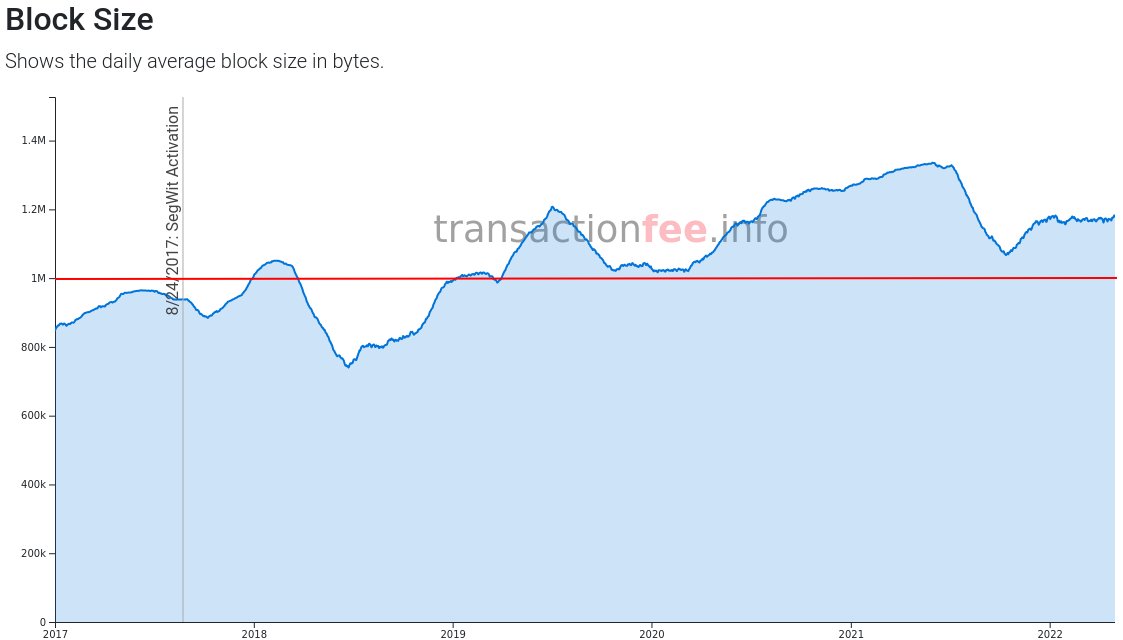
🧵I've been seeing a few comments lately that blockweight is an ugly hack, the witness discount was a mistake, and that the blocksize increase was unnecessary. A few thoughts.👇
Segwit was a bug fix, an efficiency improvement, and a blocksize increase. Economic incentives drive segwit adoption. Blocks have been mostly bigger than 1 MB since end of 2018.
via transactionfee.info/charts/block-s…; 2017–today; 7d, 30d, 100d averages; 1 MB line added by hand.👇


via transactionfee.info/charts/block-s…; 2017–today; 7d, 30d, 100d averages; 1 MB line added by hand.👇



We have seen in the past what happens when blockspace demand exceeds the stable block production: feerates explode through the roof as transactions outbid each other to get confirmed. Then the market slowly adopts best practices to do more with less blockspace.👇 

Even while the blockspace market is relaxed today, the network is consistently facilitating almost the same number of payments per day as at the peak of the 2017–18 feerate event and transferring 2–3× the value.👇 



Without the witness discount, the wrapped segwit formats would have been more expensive than corresponding legacy formats, native segwit v0 formats would have had about the same size as legacy.
Only Pay-to-Taproot is smaller both in raw size and weight.👇
Only Pay-to-Taproot is smaller both in raw size and weight.👇

P2TR would have been economically attractive even without the witness discount; even more so if it had shipped with CISA. It would certainly have been great to go from P2PKH/P2SH directly to P2TR. But Taproot was invented years after segwit and CISA is still under development.👇
Would Bitcoin be as successful if segwit hadn't been rolled out to enable the Lightning Network when it was? …if the blockspace market had been going wild for the last five years? Would BTC even have won the blocksize wars without the forward-compatibility of wrapped-segwit?👇
It's all speculation because that's not the history we have lived through. I'm all for learning from the past and changing your mind, but the recent calls for blocksize decreases and removing the witness discount baffle me. Blocks are consistently bigger than 1 MB.🔚
• • •
Missing some Tweet in this thread? You can try to
force a refresh















